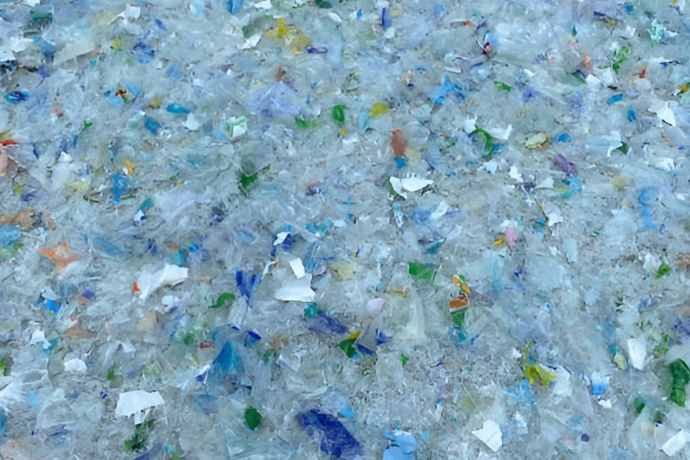HDPE Injection Molding Process: A Simple Technical Guide
Key Takeaways:
- HDPE injection molding is ideal for high-volume, cost-efficient production, delivering strong, precise, and recyclable components.
- Optimizing each stage—from material prep to temperature control—ensures consistent quality and reduces waste.
- Langgeng Jaya Group offers high-quality recycled HDPE granules tailored for efficient injection molding applications.
If you're in
the operations team at a plastic manufacturing company, you already know how
crucial efficiency, precision, and cost-effectiveness are in injection molding.
Whether you're producing packaging,
automotive components, or industrial parts, HDPE (High-Density
Polyethylene) is one of the most reliable materials in
the industry.
But how do you
optimize your HDPE injection molding process to maximize productivity while
maintaining high-quality standards?
This guide
breaks it down for you in a practical, no-nonsense way.
What is HDPE
Injection Molding?
HDPE injection molding is a highly efficient manufacturing process where HDPE pellets are melted and injected into a mold to form plastic components. It's widely used for:
·
Plastic bottles and containers
·
Automotive components
·
Pipes and fittings
·
Household and industrial products
Why HDPE
Injection Molding Works for High-Volume Production
1. Cost-Effective and Scalable
HDPE is affordable
and readily available, making it a smart choice for large-scale production.
Injection molding allows you to produce
high volumes with minimal material waste, reducing per-unit costs.
2. Precision Engineering
Need tight
tolerances and intricate designs? Injection molding ensures high accuracy and repeatability, critical
for components that need exact specifications.
3. Built for Tough Environments
HDPE is known for its strength and resistance to impact, making it
ideal for demanding applications like automotive,
construction, and industrial components.
4. Environmental and Chemical Resistance
If your products face harsh weather, chemicals, or UV exposure,
HDPE holds up better than many other plastics, ensuring durability over time.
5. Sustainable and Recyclable
Sustainability is becoming
non-negotiable. HDPE is 100% recyclable,
reducing waste and helping manufacturers meet environmental regulations without
compromising performance.
Related Read: Recycled
HDPE vs. Virgin HDPE – A Comprehensive Comparison
Optimizing the HDPE Injection Molding Process
1. Material Preparation
HDPE pellets go into the hopper, where they are melted through a
combination of heat and controlled screw rotation. Proper melt uniformity is key to avoiding air
pockets and defects.
2. Precision Injection
The molten HDPE is injected into the
mold at pressures between 10,000 and
30,000 psi. Proper pressure control ensures a complete
mold fill without defects like voids or bubbles.
3. Cooling for Dimensional Stability
The mold is equipped with cooling
channels that use water or air to solidify the HDPE quickly and evenly. Poor
cooling management can lead to warping or inconsistent dimensions.
4. Efficient Ejection System
Once solidified, the part is ejected
from the mold using pins or mechanical
systems. Well-designed ejection reduces scrap
rates and production slowdowns.
5. Post-Processing and Quality Control
After ejection, parts may need trimming, sanding, or secondary processing to
meet design requirements. Implementing real-time
quality checks minimizes defects and rework.
Also Read: A
Complete Guide to Choosing the Right FIBC for Your Business
Temperature
Management: The Key to Consistency
Controlling temperature at every stage ensures your
HDPE flows correctly and retains its
mechanical properties.
The recommended range for HDPE
injection molding is 180°C to 230°C,
but fine-tuning it based on specific product needs can optimize cycle times and
quality.
Real-World
Applications of HDPE Injection Molding
Your operation might be using HDPE for
a variety of applications. Some common ones include:
·
Consumer
Goods: Storage containers, toys, sporting equipment
·
Packaging: Bottles,
bins, food containers
·
Automotive
Parts: Fuel tanks, piping, protective casings
·
Construction
Materials: Pipes, plastic sheets, geomembranes
·
Industrial
Components: Pipe thread protectors, machinery parts
Read More: Innovative
Products Made from Recycled HDPE Worldwide
Challenges in
HDPE Injection Molding (And How to Fix Them)
Even with a dialed-in process,
challenges pop up. Here’s how to tackle the most common ones:
·
Shrinkage: Optimize cooling time and mold
design to prevent excessive shrinkage.
·
Flow Marks: Ensure
even material flow with precise temperature and pressure settings.
·
Tool
Wear: Regular mold maintenance extends tool life and prevents defects.
Why HDPE
Injection Molding is the Smart Choice for Manufacturers
For an operations team like yours, efficiency, reliability, and cost-effectiveness are
non-negotiable. HDPE injection molding delivers on all fronts, ensuring you can meet production targets without sacrificing
quality.
Need
High-Quality HDPE for Your Injection Molding Line?
At Langgeng Jaya Group,
we supply top-grade recycled HDPE
granules for injection and also recycled HDPE designed for the
blow process.
Stay ahead in plastic manufacturing — Read more insights from Langgeng Jaya Group.
Contact us today to
learn more about our solutions and how we can support your production needs.



